
The data paints a concerning picture. When looking at universities ranked between 100-500 overall in the QS World University Rankings, US university performance is dropping while competitors are improving.
Pronounced drop in performance
In 2021, aspiring US institutions (those ranked between 100-500) started with the best average rank compared to aspiring peers in the UK, China, Canada and Australia. In 2025, that picture has changed – following a dramatic degradation in the average rank, only China’s aspiring universities perform worse than US universities – and that gap has significantly closed.
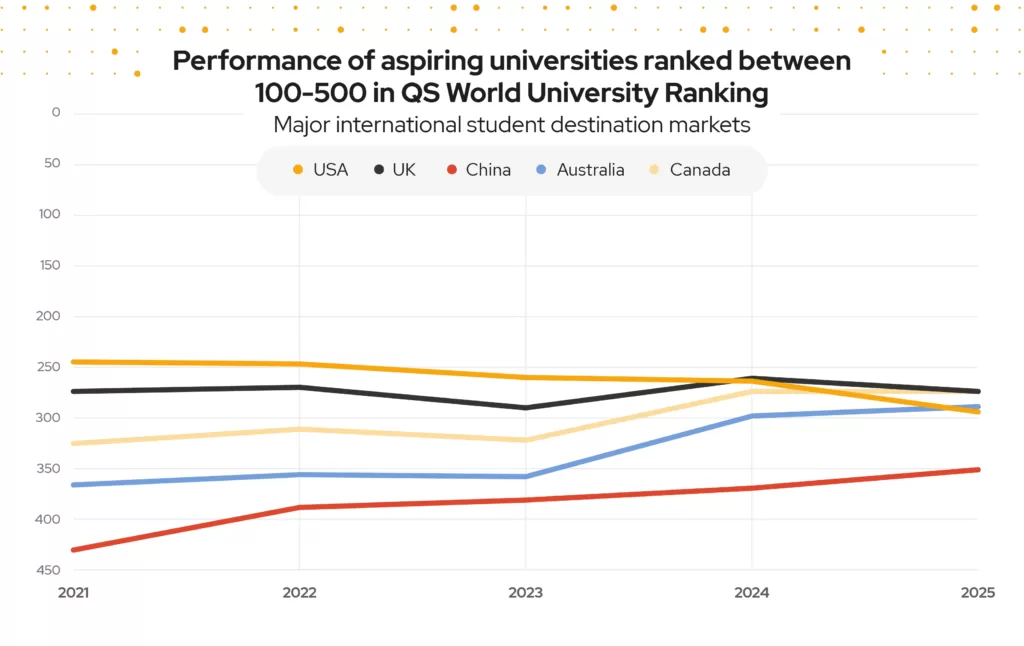
What is driving this shift? What can institutions do to turn this around?
US research being outshone by China
When looking at data from 2021 to 2025, we see that aspiring US institutions have increased the count of research papers produced per year by 17%, however most of this growth was between 2021-2022, with only a 2% year-on-year (YoY) increase between 2024-2025. Meanwhile China has seen unprecedented research productivity – among Chinese universities ranked between 100-500, the number of papers produced per year has increased by 64%.
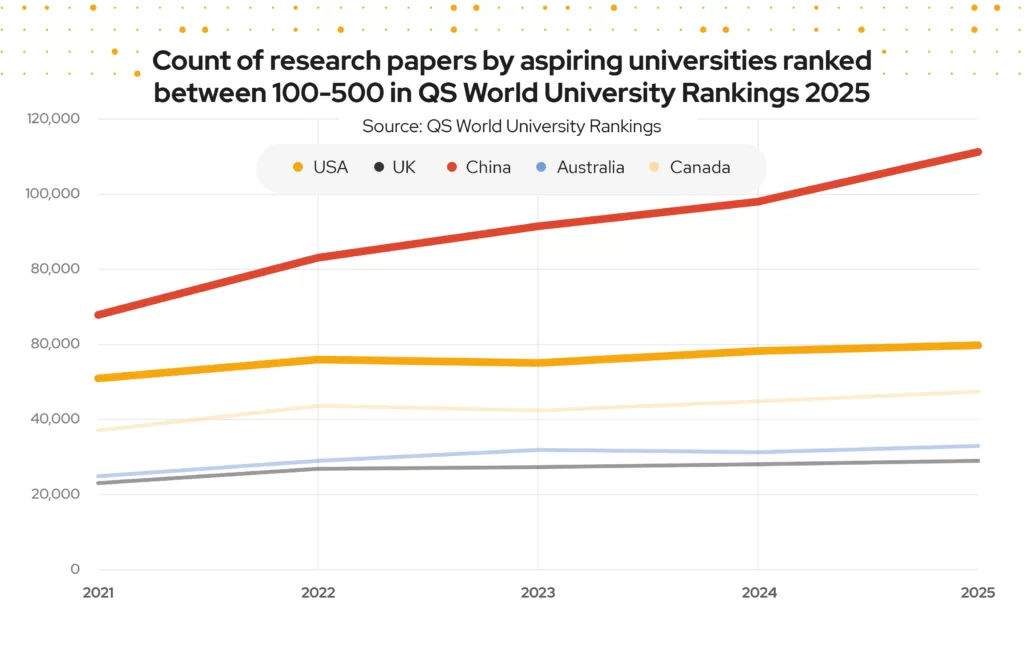
The other big markets have also increased over five years more than the US has, though not at quite such a disparate rate.
There is a similar picture in our research impact metric.
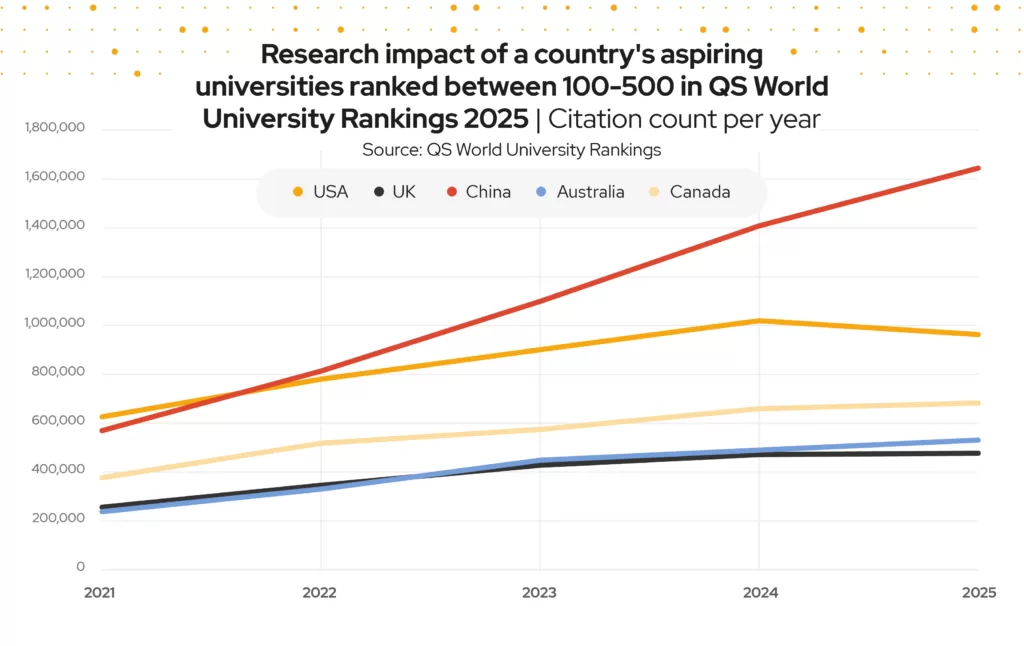
While the US remains in second position, research impact dropped by 6% between 2024 and 2025, while all other markets increased. Over time, the trend is more pronounced, with the US increasing by 54% between 2021 and 2025, while China’s aspiring universities have increased research impact by 189%.
This increasingly competitive research environment is undoubtedly causing an impact in the QS World University Rankings. Our research metrics account for a significant portion of an institution’s rank, so this volatile metric can drive real ranking performance changes.
QS consultants can help you create a research strategy and improve your research impact.
Student cohort diversity stagnating among aspiring US universities
International student diversity has been relatively flat among aspiring US institutions since 2021, hovering around 14%. While aspiring institutions in other major destination markets have seen similar stagnation, the aspiring US institutions have far fewer international students than peers in Australia, the UK and Canada. This lack of diversity can have a negative impact on the classroom experience.
To combat the more challenging research environment, US institutions must improve in other metrics, such as international student ratio – and currently, they are not.
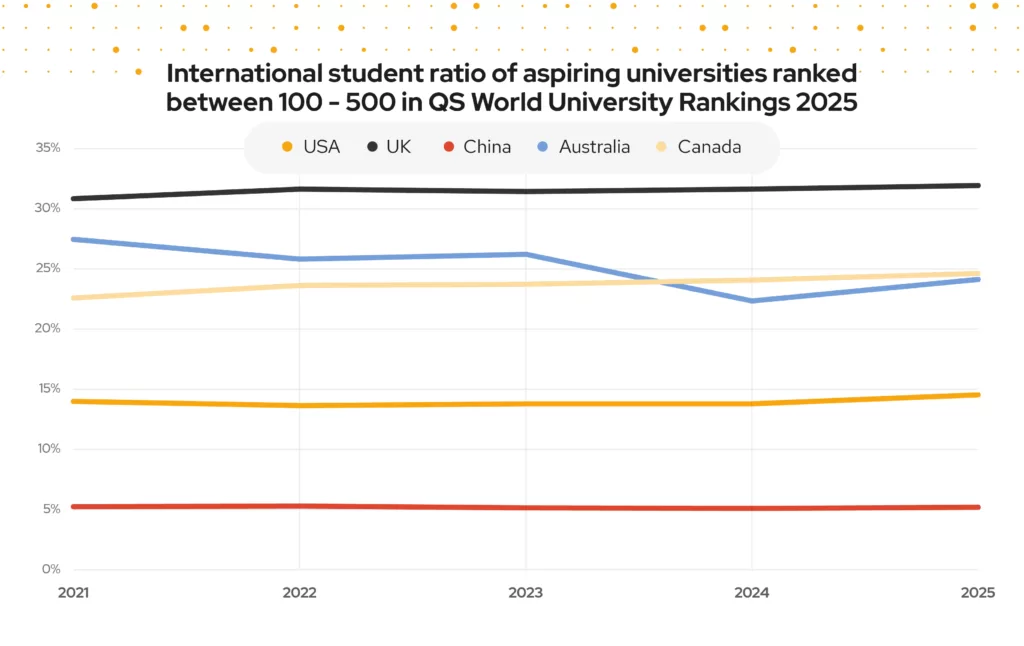
This stagnation has not been seen uniformly across American institutions. American institutions in the QS World University Rankings top 100 have increased their total international students FTE by 30% since 2021, compared to an increase of only 12% in the institutions ranked among 100-500. This aligns with a broader trend globally where international students have been seeking out elite institutions at the expense of those with lower global reputation.
Arizona State University bucking the trend
Arizona State University is one of only seven aspiring US institutions to improve their ranking between 2021 and 2025. They’ve done it by increasing their research output and impact at a rate that’s incomparable to its peers.
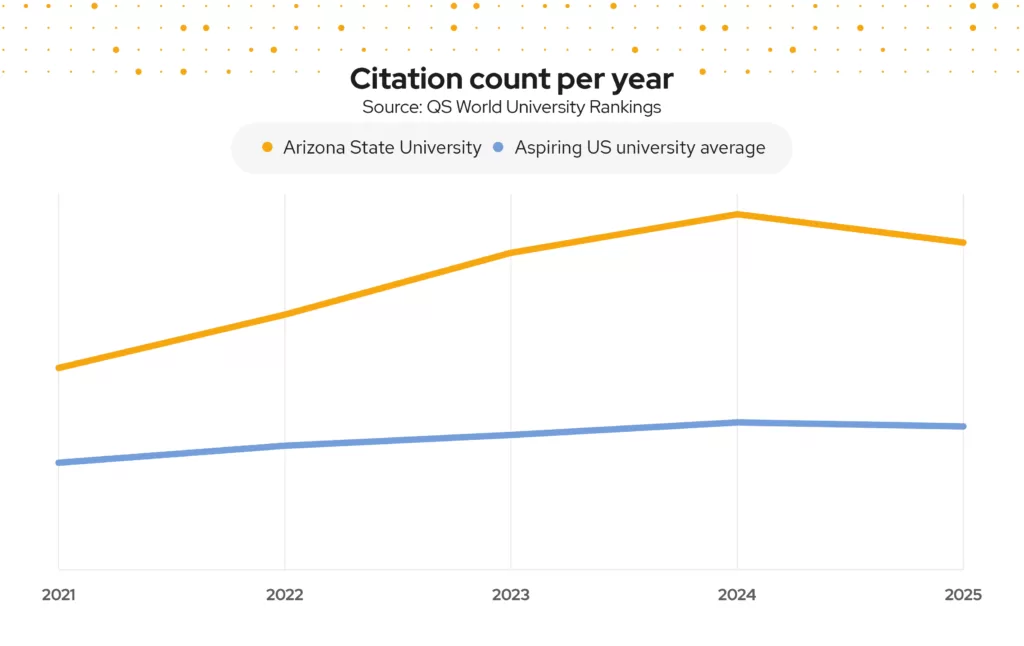
Even in 2021, Arizona was outperforming the research impact of its peers, but it has significantly improved its citation count and other institutions in this bracket have not kept pace.
US institutions must improve performance to create financial stability
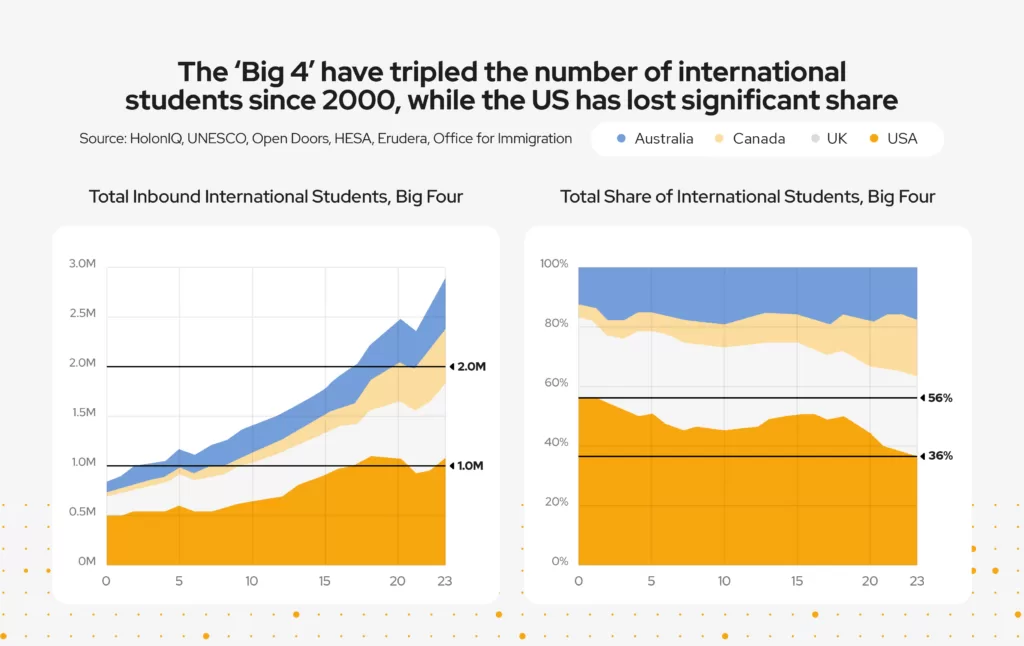
As we can see from QS World University Ranking data, the international student recruitment market is only getting more challenging. This is echoed by HolonIQ by QS analysis – the US has lost a significant share of the total number of international students.
We know there is a correlation between QS World University Ranking position and international student recruitment activity. A drop in ranking performance can have a deleterious effect on international student recruitment.
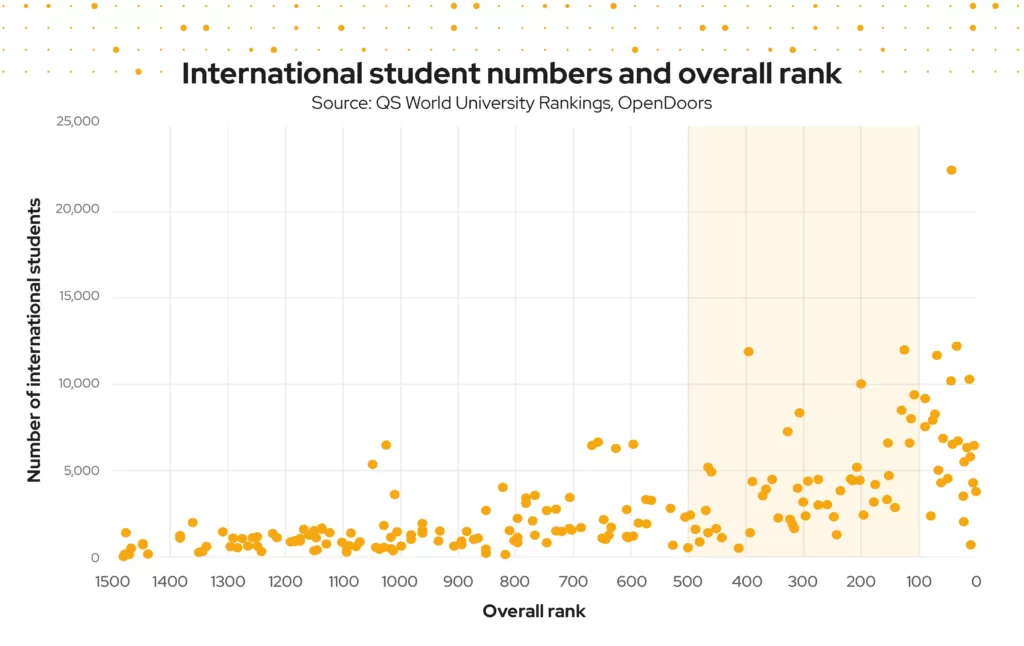
Targeted approaches to increase impact
Understand student motivations to drive enrollments
To create financial stability, it’s key that aspiring US universities understand the motivations of students looking to study in the US. Using QS International Survey Data, we can show you the preferences of over 41,000 students looking to study in the US, and what they think about the university application process, employability, sustainability and teaching methods.
This data can be used to create a new institutional narrative – one that resonates with prospective international students.
Improve research impact
To improve their ranking performance and global standing, US institutions must increase their research impact by focusing on creating resonant, innovative research.
The US is well positioned for a future-proofed recruitment strategy
In the QS World Future Skills Index, we found that the US is the readiest for the future of work. With a strong alignment between industry and universities, a high-performing economy, an active workforce recruitment environment and a large number of excellent universities, US institutions can future proof their international recruitment strategies. The data shows they are nurturing students with the skills necessary for the future of work, which not only promotes economic growth, but it also increases the return on investment of graduates.
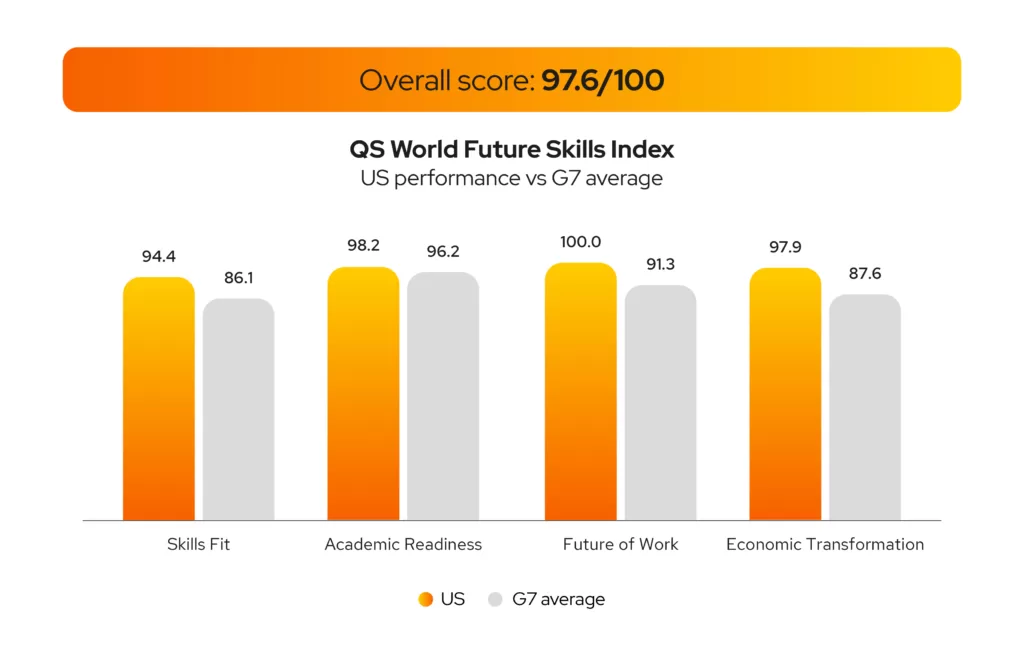
Learn more about our suite of solutions to support your student recruitment goals



